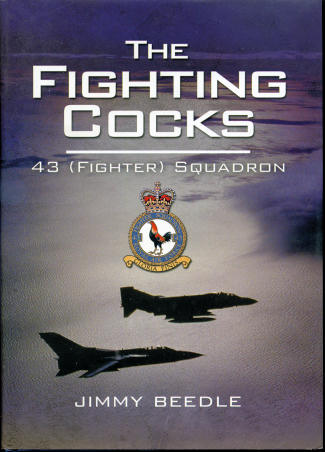 43
Squadron was formed during 1916, making one of the earliest of the then RFC's
aviation units. Starting out on a muddy field with Armstrong-Whitworth FK.8s, it
soon moved on to the Sopwith Strutter and thus began operations on a series of
Sopwith aircraft. Performing admirably during WWI, the unit was one of the first
to really get good at ground attack while amassing a considerable score in air
to air victories.
43
Squadron was formed during 1916, making one of the earliest of the then RFC's
aviation units. Starting out on a muddy field with Armstrong-Whitworth FK.8s, it
soon moved on to the Sopwith Strutter and thus began operations on a series of
Sopwith aircraft. Performing admirably during WWI, the unit was one of the first
to really get good at ground attack while amassing a considerable score in air
to air victories.
Like most now-RAF units formed during WWI, 43 Squadron
was disbanded in late 1919, only to form up again in 1925, flying the Snipe, a
type with which they were flying when disbanded. They went on to Siskins,
Gamecocks, Furys and were flying Hurricanes with WWII commenced. Retained in the
UK during the Battle of France, they were heavily involved during the Battle of
Britain and finally converted to Spitfires in 1943, long after other units had
been flying the Supermarine fighters. Staying with them until the end of the
war, the squadron ended up as part of the 2nd TAF, putting their ground attack
experience to good use. With the end of the war, they were again disbanded.
Forming up once more in 1949, they were now a jet unit,
flying Meteor F.4s. A step down came a bit later as the F.8 came into use. This
aircraft had the same engines as the F.4, but 2,000 pounds more weight. They
happily converted to the Hunter F.1 in 1954, the first unit to fly this jet.
They stayed Hunter-born, moving to Aden and flying in conjunction with 8
Squadron until disbanded once more in late 1967.
This time, the quiescent time was much less as the Royal
Navy had over-ordered the F-4K Phantom II (thanks to the decommissioning of a
carrier). In mid 1969, these now-FGR.1s were given to 43 squadron and so began a
long affair with the Phantom and an initiation into modern air defense. After
over 20 years they switched to the FGR.2 for a bit over a year before
transitioning to the Tornado F.3.
Still flying air defense, the unit had the opportunity
to participate in both Gulf Wars and the Kosovo operations. Sadly, a continuing
drawdown of British military aviation forced the disbanding of the unit in 2009.
Will 43 Squadron arise from the ashes, it is hard to say.
Author Jimmy Beedle is a confirmed 43 Squadron
enthusiast and historian. This is the third edition of his book, the first being
written during the Hunter years, the second during the Phantom years and this
edition was concluded some 25 years after his death by authors Alan Carlaw,
Norman Franks and WC Andy Moir to bring us to the current close of the unit.
Throughout the book are superb period photographs of the
men and the planes of the unit. We get a nearly day to day account of operations
during the wars as well as a look at some of the personalities of the squadron.
Included are extensive appendices that list squadron commanders, bases, aircraft
performance, a huge list of know aircraft with serials and codes as well as
disposition when known. There are others that only add to the depth of this
superlative unit history.
It all makes for a book that is by no means a quick
read, but an excellent look into the unit in particular and the RAF in general
since its formation. A book that I can quite easily recommend to you for its
depth and readability (if that is indeed a word).
December 2011
Review book courtesy of
Casemate Publishing, where you can order your copy of this and many other superb books.
If you would like your product reviewed fairly and fairly quickly, please contact the editor or see other details in the
Note to
Contributors.
 43
Squadron was formed during 1916, making one of the earliest of the then RFC's
aviation units. Starting out on a muddy field with Armstrong-Whitworth FK.8s, it
soon moved on to the Sopwith Strutter and thus began operations on a series of
Sopwith aircraft. Performing admirably during WWI, the unit was one of the first
to really get good at ground attack while amassing a considerable score in air
to air victories.
43
Squadron was formed during 1916, making one of the earliest of the then RFC's
aviation units. Starting out on a muddy field with Armstrong-Whitworth FK.8s, it
soon moved on to the Sopwith Strutter and thus began operations on a series of
Sopwith aircraft. Performing admirably during WWI, the unit was one of the first
to really get good at ground attack while amassing a considerable score in air
to air victories.